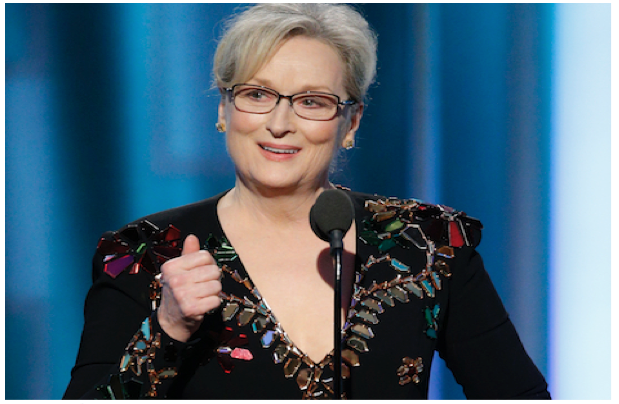CommentsCULTURAL DISCONNECT?--No industry is more identified with Southern California than entertainment. Yet, in the past, the industry’s appeal has lain in identifying with the always-changing values and mythos of American society. But, today, that connection is being undermined, not just by technology, but also by a seemingly self-conscious decision to sever the industry’s links with roughly half of the population.
This was painfully obvious during the Oscars — the penultimate event of the seemingly endless award season — when speaker after speaker decided to spend their moments of fame denouncing President Donald Trump. For all his personal failings, and often misguided policies, most Republicans and independents disapprove of the relentless Trump bashing in the media.
Hollywood’s decision to make itself part of the anti-Trump resistance would make for wonderful satire, if you could get it on film. Imagine feminist icon Emma Watson fighting for “women’s empowerment” while baring her breasts in Vanity Fair. Or a host of social justice warriors, like Meryl Streep, demanding justice for the dispossessed, then returning to their estates where these victims of Trumpism are not likely to be found outside the servants’ quarters.
The results also have a hard side: dismal ratings, down from a traditional viewership of 40 million to a mere 32 million, following a pattern that has seen it slide badly the last three years. Most Trump voters turned off the political speeches, notes one survey. But the Academy had other ways to show its contempt for its customers: None of the 10 largest grossing movies, notes USA Today’s Mitch Albom, got nominated for best picture, best actor or actress, or for supporting roles.
The everyman era
The preference of sophisticated opinion may be quintessential to Europe’s boutique film industry, but the blending of popular tastes with art has long propelled Hollywood’s historical success. This separation between audience and the Academy was not always the case. Films like “Gone with the Wind” (1939), “Around the World in 80 Days” (1956), “Ben-Hur” (1959), “The Sound of Music” (1965), “The Godfather” (1972), “Forest Gump” (1994) and “Titanic” (1997) all managed to be both blockbusters and best picture winners.
Hollywood, wrote author Leo Rosten in 1940, was “the very embodiment” of “magic success,” allowing a truck driver to dream of being a hero, or a small-town waitress “to compare herself to a movie queen.” Hollywood was Middle American to the core, which appealed not just to our own audiences, but also to those around the world.
In a political sense, Hollywood connected with Americans across the ideological spectrum. During the contentious 1930s, Hollywood could accommodate both the conservative myth of the loner — Gary Cooper and John Wayne — and also produce powerful dramas that touched on issues of class and inequality, such as “Our Daily Bread” (1934), “How Green Was My Valley” (1941) and “The Grapes of Wrath” (1940).
Some progressive-leaning films were written by people who were later “blacklisted” during the McCarthy era, a tragedy that deprived the industry of some of its greatest talents. The industry instead favored biblical epochs like “Quo Vadis” (1951) as well as innocuous comedies starring the likes of Doris Day.
“It was boy meets girl, lives happily ever after,” recalled former Los Angeles and Orange County Republican Congressman Bob Dornan, who grew up during this time. “There were clear-cut heroes and villains. Nazis torturing little old ladies, John Wayne landing on the beaches. … America was the bearer, the hope of the world.”
New closets and old
In the early 1980s, when Dornan was wistfully reminiscing, things were already changing. As his uncle, Jack Haley Sr., best known for playing the Tin Man in “The Wizard of Oz” (1939), grumbled, “The gays have come out of the closet and the conservatives have gotten in.”
Like the blacklist, the closeting of gays was shameful. But now, particularly after Trump’s election, there’s a new kind of exclusion that marginalizes all but progressive thinking, with conservatives, as one put it, threatened with being “excommunicated from the church of tolerance.”
Few, even most conservatives, don’t want a return to the self-censorship of the 1950s. It’s simply time to call a moratorium on ceaseless hectoring. Shows with edgy themes packaged in comedy and irony, like “Modern Family,” can still do well with a mass market, but there’s a limited audience for openly activist-driven programs like ABC’s miniseries “When We Rise.”
A critical economic issue
This is occurring as overall ticket sales are down to a century low and employment is, for the most part, stagnant. The television industry has also declined in the face of internet-based services, cord-cutting millennials and social media. There is also more competition, both from abroad and within the United States. In 1980, Hollywood employed three-quarters of all movie personnel. Now, as much as 80 percent of film starts take place elsewhere, taking many jobs along with them.
How the creative industries — responsible for upwards of 700,000 jobs statewide, most of them in Southern California — addresses these issues is critical at a time when we have lost ground to other areas in fields from high-tech to manufacturing and business services. But, to revive fully, the Southern California cultural industry needs to once again speak to the aspirations of most Americans, not just the enlightened sophistos on the coasts. To leave people in Middle America, particularly in their 50s and above, watching reruns of old programs is not exactly a great business strategy for future growth.
Joel Kotkin is the R.C. Hobbs Presidential Fellow in Urban Futures at Chapman University in Orange and executive director of the Houston-based Center for Opportunity Urbanism (www.opportunityurbanism.org). Prepped for CityWatch by Linda Abrams.
Explore
Our mission is to promote and facilitate civic engagement and neighborhood empowerment, and to hold area government and its politicians accountable.

 CityWatch Los Angeles
Politics. Perspective. Participation.
CityWatch Los Angeles
Politics. Perspective. Participation.
29
Tue, Apr















